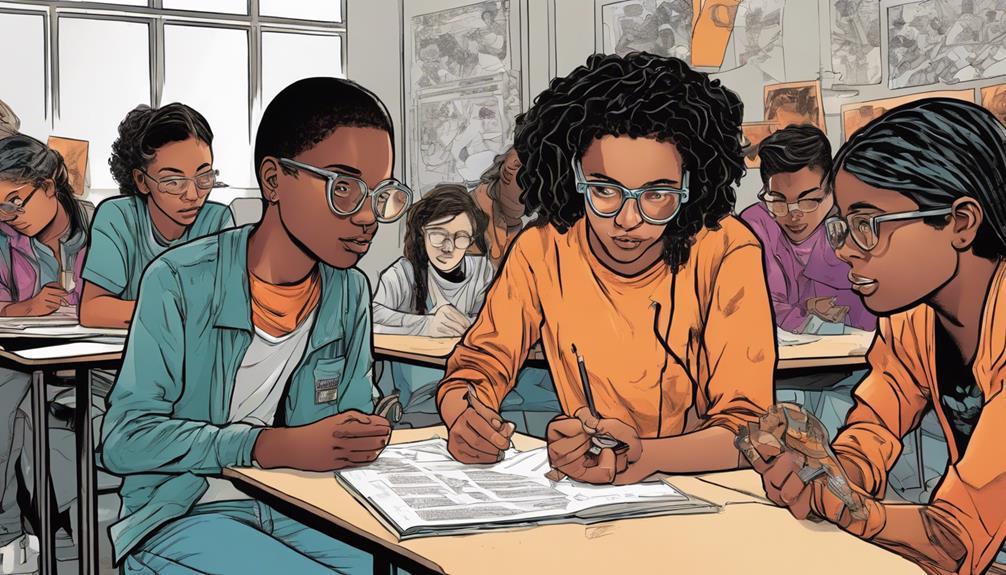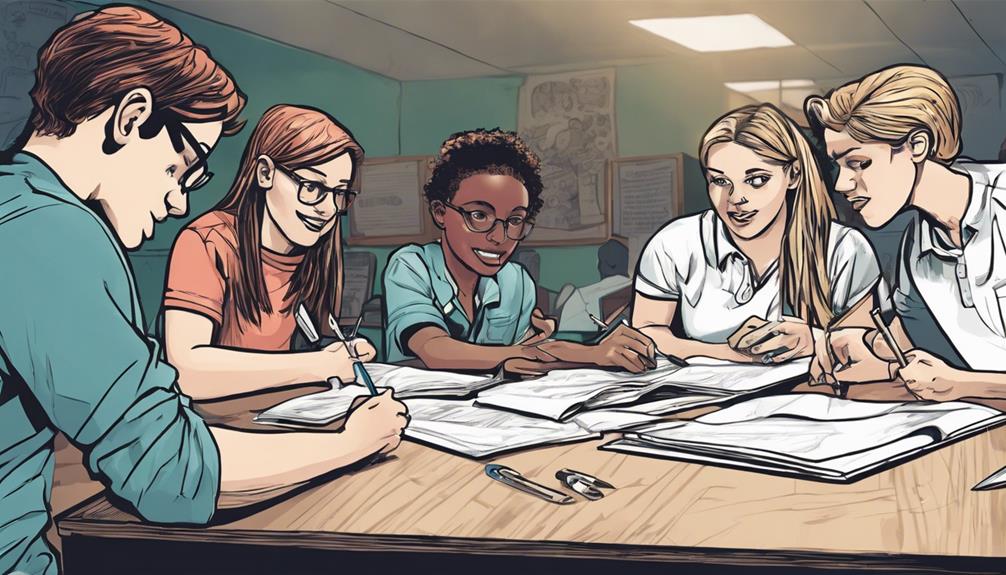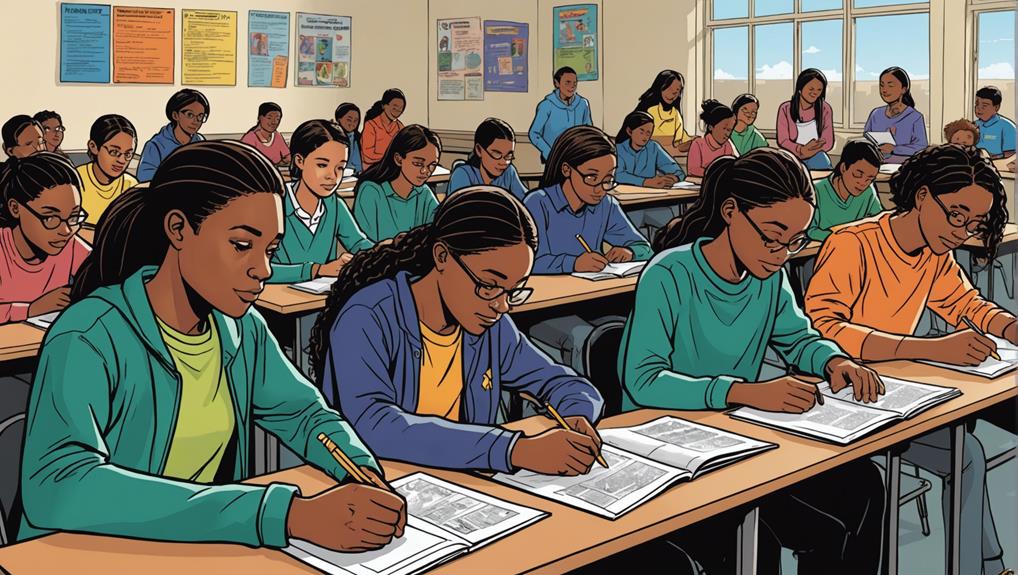Embark on an intriguing exploration of learning's depths, where traditional methods evolve into student-centered and constructivist approaches. The transition from surface to deep learning reveals the beauty of understanding over mere memorization. Strategies fostering critical thinking, like flipped classrooms and collaborative projects, enhance comprehension and problem-solving skills. Engage in practical activities to deepen understanding through hands-on experiments and concept reinforcement. Discover insights from a High School Science and Mathematics teacher on effective instructional methods and student engagement. Expose the secrets of deep learning to reveal the full potential of your educational journey.
Key Takeaways
- Emphasizing deep learning over surface learning for understanding.
- Incorporating critical thinking skills through insightful questioning.
- Encouraging active participation in practical tasks for application.
- Fostering problem-solving abilities and creativity in students.
- Integrating real-world experiences to deepen comprehension.
The Evolution of Learning Practices

Learning practices have undergone a significant transformation over the years, shifting from traditional surface learning methods towards more student-centered and constructivist approaches. In the past, surface learning sufficed, focusing on memorization rather than understanding.
However, contemporary pedagogy emphasizes constructivism and active learning, empowering students to engage deeply with the material. This shift acknowledges that facts are evolving rapidly in our digital age, requiring a more dynamic approach to education.
Deep Learning Vs Surface Learning

The distinction between deep learning and surface learning lies in their fundamental approaches to acquiring and processing knowledge. Deep learning involves delving into the underlying concepts, asking insightful questions, and integrating new information into existing knowledge frameworks. It goes beyond mere memorization, fostering a deeper understanding that allows for application in various contexts.
On the other hand, surface learning focuses on memorizing facts and content without necessarily grasping the deeper meaning or connections. Research in neuroscience has shown that deep learning leads to significant changes in the brain, enhancing critical thinking and problem-solving skills.
Strategies for Encouraging Deep Learning

Encouraging deep learning in educational settings necessitates implementing effective strategies that foster critical thinking and knowledge application beyond surface-level comprehension. To achieve this, educators can embrace the flipped classroom model, where students engage with material before class and use valuable in-class time for application-based activities.
Collaborative projects challenge students to think critically and apply concepts in real-world scenarios, enhancing their deep understanding of the subject matter. Encouraging content creation, such as presentations and summaries, prompts students to analyze information and convey it in their own words.
Additionally, using journaling and practical tasks fosters exploration and application, reinforcing learning in a meaningful way. These strategies not only deepen students' understanding but also make learning engaging and enjoyable.
Engaging in Practical Learning Activities

Engaging actively in practical learning activities is essential for students to deepen their understanding and apply knowledge effectively in real-world contexts. By participating in hands-on tasks and experiments, students can immerse themselves in the gap between theoretical knowledge and practical application.
Practical activities not only reinforce concepts but also enhance critical thinking, problem-solving, and creativity. From conducting science experiments to designing projects, engaging in practical learning fosters a deeper level of comprehension and skill development. It allows students to experience firsthand the relevance and significance of what they learn in the classroom.
Through these activities, students can cultivate a sense of curiosity and exploration, making learning more engaging and memorable. So, roll up your sleeves and get ready to engage in the exciting world of practical learning!
Author Information and Related Topics

With a background in High School Science and Mathematics teaching, the author explores various topics such as classroom strategies, constructivism, deep learning, the flipped classroom, and hybrid teaching approaches.
Delving into these areas, the author brings a wealth of practical experience and theoretical knowledge to the table. Drawing from firsthand teaching experiences, the author provides insights into effective instructional methods, student engagement techniques, and innovative approaches to fostering deep learning.
Frequently Asked Questions
How Can Technology Enhance Deep Learning in the Classroom?
Technology can enhance deep learning by providing interactive simulations, virtual laboratories, collaborative platforms, and real-time feedback. Incorporating multimedia resources, personalized learning tools, and online research opportunities can deepen student engagement and facilitate meaningful connections with the content.
What Are the Benefits of Constructivist Teaching Methods?
Embracing constructivist teaching methods empowers learners to construct their understanding, fostering critical thinking and problem-solving skills. By actively engaging in knowledge creation, students develop a deeper comprehension of concepts, enhancing long-term retention and application.
How Can Students Apply Deep Learning in Real-Life Situations?
Students can apply deep learning in real-life situations by integrating new knowledge, asking critical questions, and revisiting concepts in varied contexts. This active approach fosters understanding, problem-solving skills, and the ability to adapt to dynamic environments.
What Role Does Reflection Play in Deep Learning Processes?
Reflection plays a vital role in deep learning processes by allowing students to analyze their understanding, connect new information to existing knowledge, and evaluate their learning strategies. It fosters metacognition, critical thinking, and application to real-life scenarios.
How Can Teachers Adapt to Individual Learning Styles for Deep Learning?
Exploring the educational landscape is akin to a skilled gardener tending to a diverse array of plants. Teachers can adapt to individual learning styles for deep learning by cultivating personalized nurturing environments that cater to each student's unique growth needs.
Conclusion
In the journey of learning, immersing ourselves in the depths of knowledge is like exploring a treasure trove of wisdom.
Just as a skilled diver navigates the ocean's mysteries, embracing profound learning allows us to uncover hidden gems of understanding and insight.
So, let us set sail on the seas of education, equipped with the tools to explore the depths of learning and emerge enriched with valuable knowledge and perspectives.










